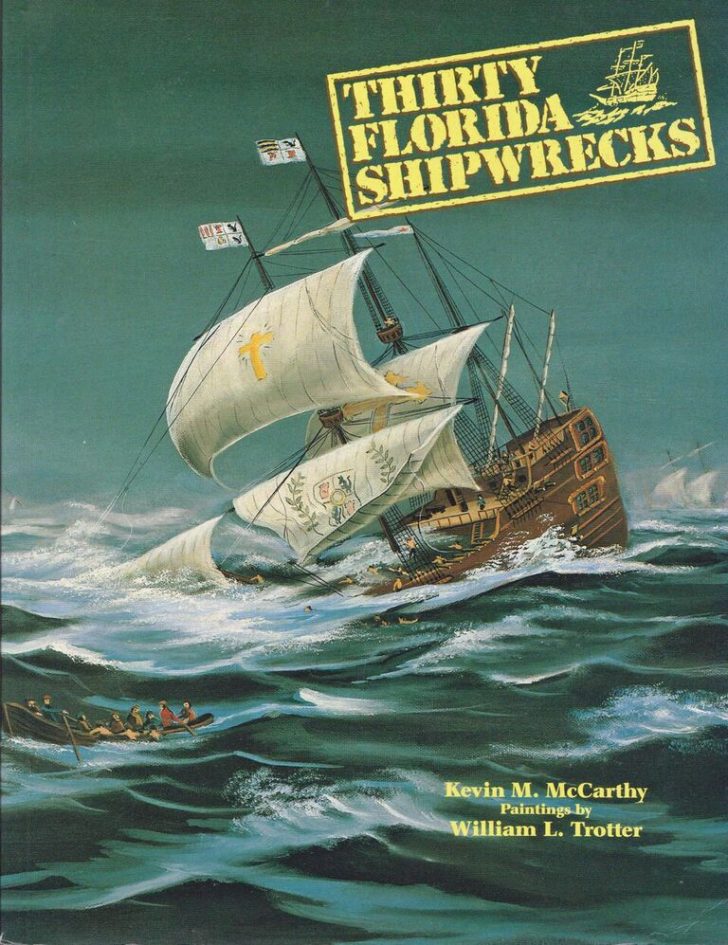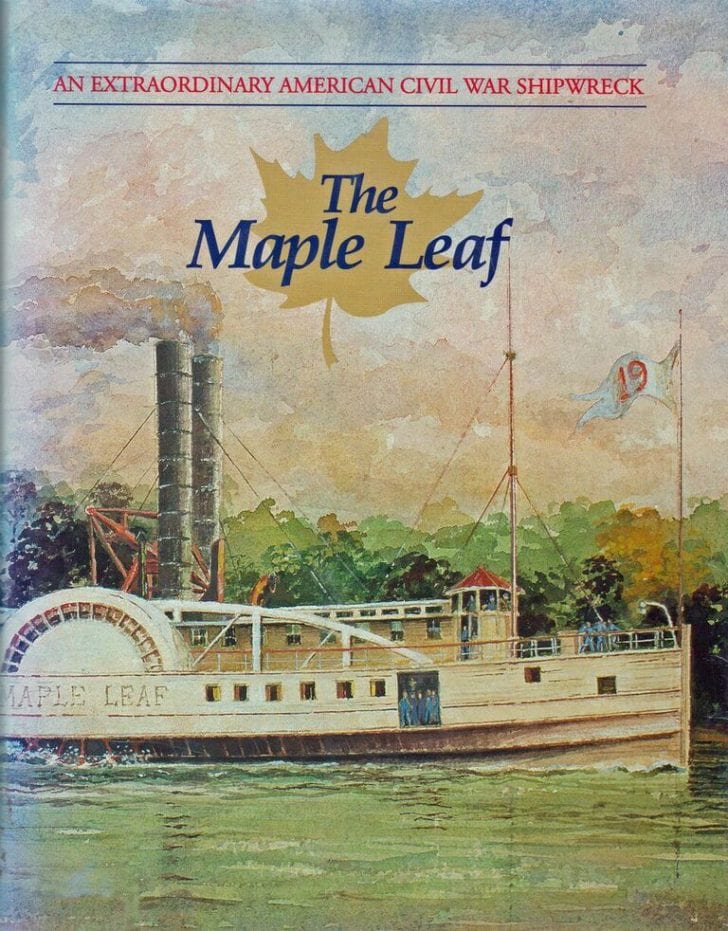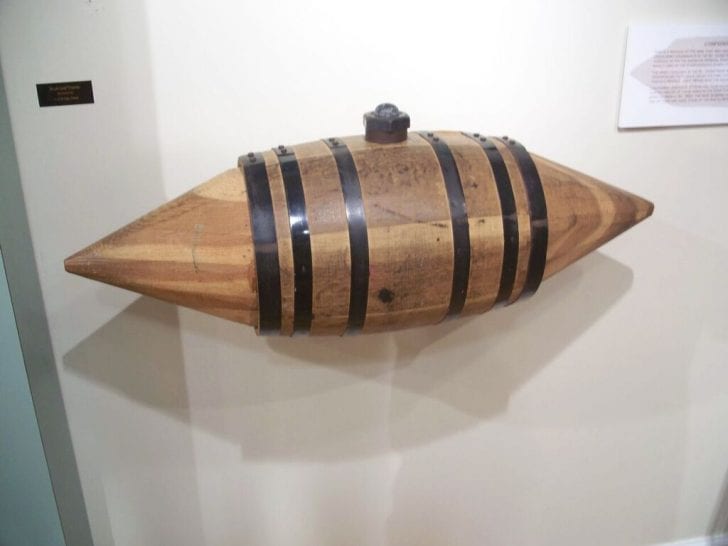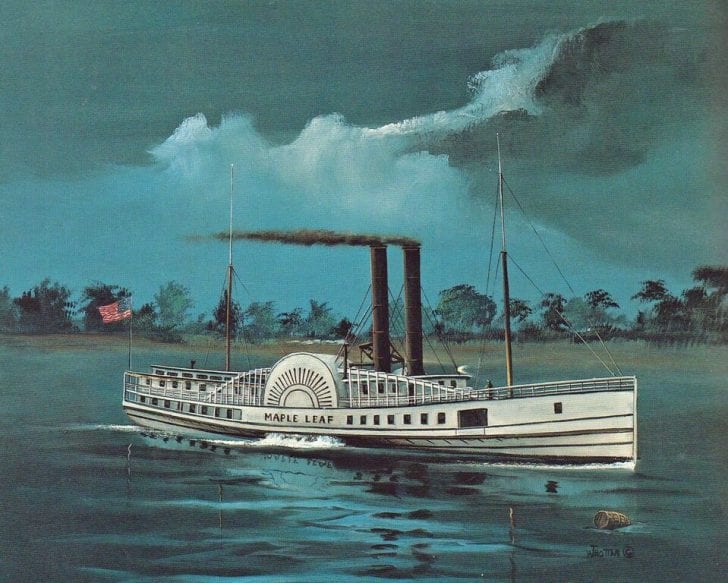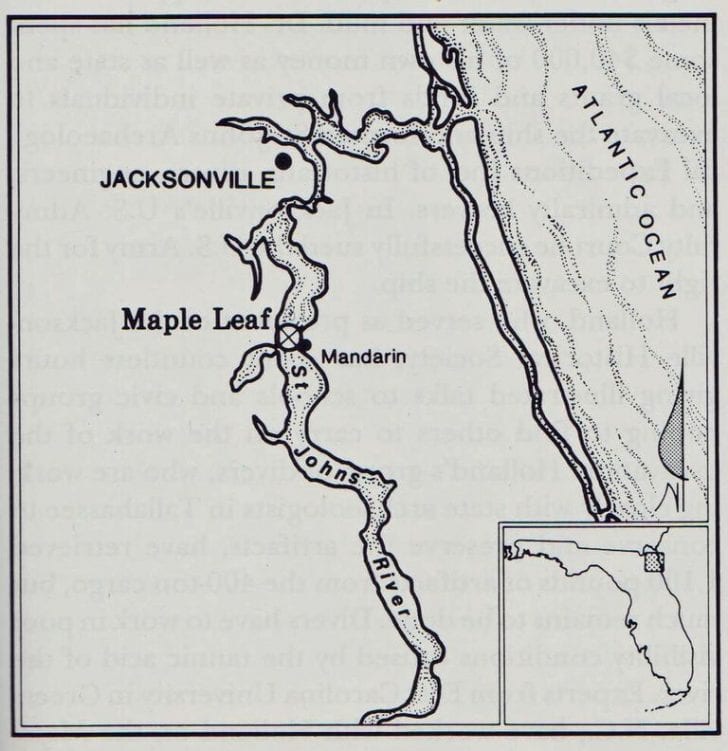CAPTIONS:
1 Florida shipwreck book
2 A book about the shipwreck
3 A Civil War torpedo
4 The ship just before it hit the mine
5 The location of the shipwreck
6 A plaque about the shipwreck
Florida Waterways
“The Maple Leaf Shipwreck in the St. Johns River”
By Kevin McCarthy
Our Florida waterways offer a rich store of natural resources, like many species of fish, as well as man-made objects that can tell us much about the past. For example, a shipwreck in the St. Johns River near Jacksonville, provides a treasure trove of information about the American Civil War.
First launched in Ontario, Canada, in 1851, the 181-foot-long sidewheel paddle steamer began life carrying people and cargo from a railway facility. In the early 1860s, the Union Army chartered the vessel to transport soldiers in the United States during the Civil War.
On April 1, 1864, as the ship was heading north from Palatka, Florida, carrying three Confederate prisoners and a small group of Union sympathizers fleeing the area, it struck a mine in the river, a mine resembling the one pictured here that Confederate troops had placed in the St. Johns. In the ensuing explosion, four Union soldiers lost their lives in what turned out to be the first mine casualty of the war. The mines which the Confederate troops set in the river near Mandarin Point about twelve miles south of Jacksonville held seventy pounds of explosive powder.
The ship sank within seven minutes, in twenty-four feet of water and was soon embedded in the thick mud of the river bottom. It would rest there until the early 1980s, when Keith Holland, a Jacksonville dentist and descendant of an Alabama Confederate soldier, began researching records and was finally able to pinpoint just where the Maple Leaf had met her demise. He then began spending as much as $40,000 of his own money, as well as state and local grants, to dive on the site in very murky water. He and fellow divers retrieved over one thousand pounds of the 400-ton cargo carried by the ship.
Today the Maple Leaf is a U.S. National Historic Landmark shipwreck in southeastern Duval County. What is important about this particular shipwreck, which the deep mud has preserved for over 150 years, is the kind of artifacts divers have found on it: utensils like shaving kits, belt buckles, and personal items belonging to the Union soldiers being transported on the ship. Such so-called “ordinary” everyday items can reveal what life was like for the soldiers, something that historians and archaeologists seldom find.
A plaque on the Riverwalk in Jacksonville, describes the shipwreck and its importance. Although the public is not allowed to dive on the shipwreck, those interested in its history can view many of the artifacts found on the Maple Leaf in the Jacksonville Museum of Science and Industry.
Kevin McCarthy, the author of Thirty Florida Shipwrecks 1992 – (available at amazon.com), can be reached at ceyhankevin@gmail.com.

